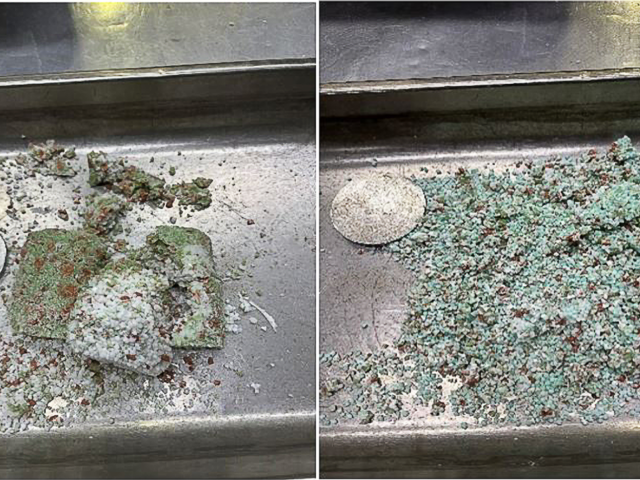
Reduce Clumping in Dry Fertilizer Blends With ESN
Humidity and warm temperatures can cause fertilizer blends to take on moisture over …
Nitrogen rate was 250 lbs N/acre. AMS/AN treatment is split application with 1/3 of total N applied at emergence as ammonium sulfate and incorporated by hilling cultivation with the remaining 2/3 applied as ammonium nitrate at tuberization and immediately watered in. Agrotain treated urea (Urea + AT) and Super U treatments were similarly split as 1/3 at emergence and 2/3 at tuberization. ESN was applied in one application at emergence and similarly incorporated by the hilling cultivation. Yield values are marketable yield and are means of three years. Leaching comparison is based on 3-yr average cumulative nitrate loading at a 3.3-ft depth. Source: Dr. M. Ruark, Univ of Wisconsin, Manuscript in preparation.
Potatoes require careful management of relatively high nitrogen (N) rates. They are a shallow-rooted crop often grown on sandy soils with potential for nitrogen (N) leaching beyond the root zone and into groundwater. ESN has repeatedly been shown to produce greater potato yields with fewer applications, reduce N leaching, and increase profits. In this Wisconsin study, one ESN application produced greater yields than all other N sources and was the most effective source in controlling leaching losses.

| Attachment | Size |
|---|---|
| ESN Improves Wisconsin Potato Productivity and Reduces Nitrogen Leaching | 673.96 kb |

Humidity and warm temperatures can cause fertilizer blends to take on moisture over …

Recent research in Idaho identified the effectiveness of ESN as the nitrogen source …

For an in-depth discussion on the various nitrogen loss mechanisms and how to …